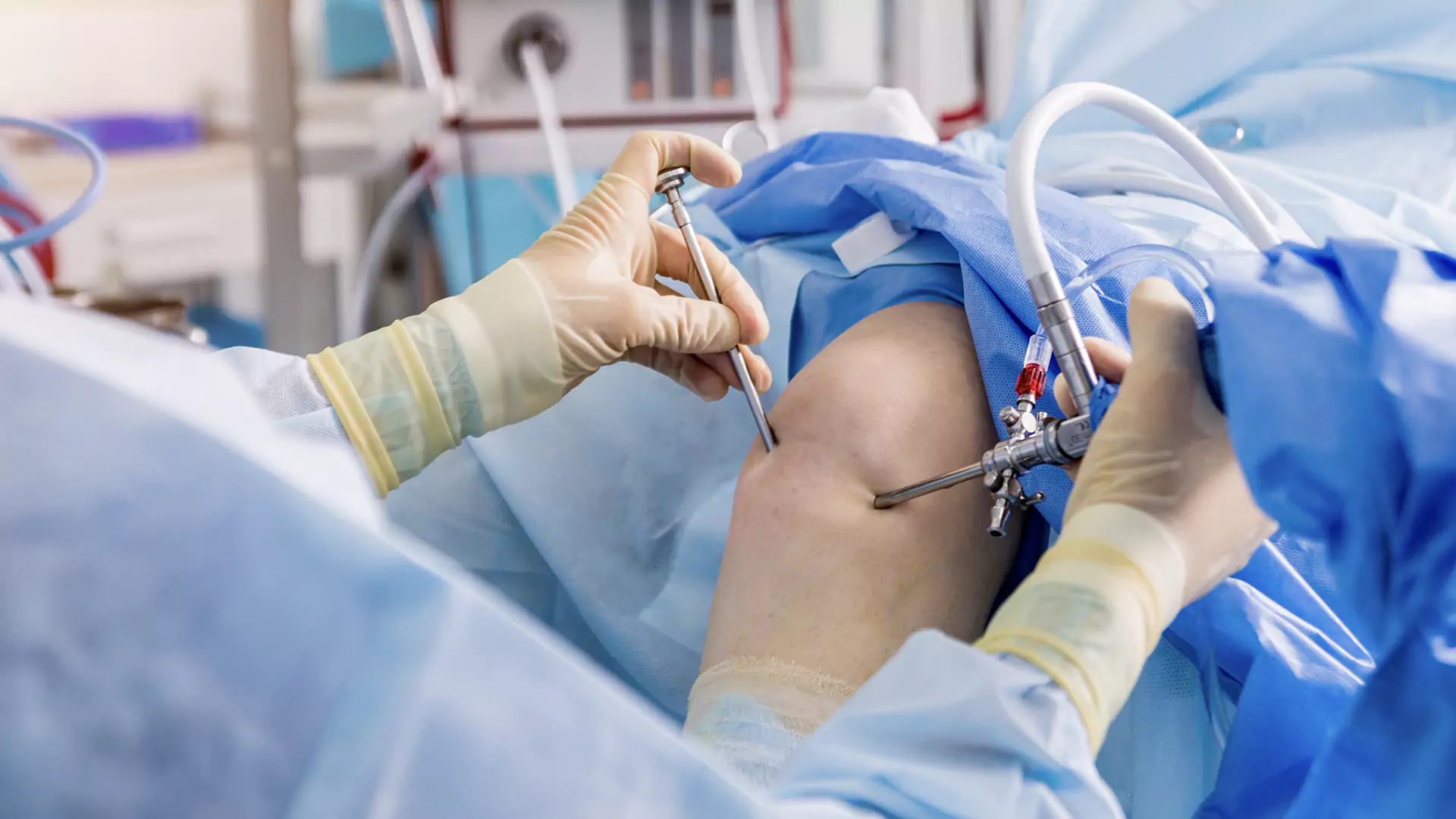MJ Naidu Super Speciality Hospital
- Home
- /
- Arthroscopy
Arthroscopy in Vijayawada

Best Arthroscopy In Vijayawada
Understanding Arthroscopy: Pioneering Orthopedic Precision
Arthroscopy is a groundbreaking surgical procedure that has redefined how we approach joint-related issues. At MJ Naidu Super Specialty Hospital, we are dedicated to harnessing the power of arthroscopy to benefit our patients. This minimally invasive technique enables our orthopedic surgeons to visualize, diagnose, and treat a wide range of joint conditions with exceptional precision.
Arthroscopy is a medical procedure that involves the use of a tiny camera, called an arthroscope, and small incisions to access and treat problems within a joint. It has become a cornerstone of modern orthopedic surgery. Arthroscopy is commonly performed on the knee, shoulder, hip, and ankle joints, although it can be used for other joints as well.
Arthroscopy: How It Works
The primary goal of arthroscopy is to provide a clear view of the joint’s interior while minimizing trauma to the surrounding tissues. Here’s a step-by-step breakdown of how the procedure works:
Anesthesia: Before the surgery, local or general anesthesia is administered to ensure the patient’s comfort.
Incisions: Small incisions, typically no larger than a few millimeters, are made around the joint.
Arthroscope Insertion: An arthroscope, a thin, flexible tube with a light and camera at the tip, is inserted into one of the incisions. This allows the surgeon to visualize the joint’s interior on a monitor in real-time.
Exploration and Diagnosis: With the arthroscope in place, the surgeon explores the joint, assessing its condition and identifying any issues.
Treatment: If necessary, additional small incisions may be made to introduce surgical instruments for repairs or removal of damaged tissue.
Closure: After the procedure, the incisions are closed with sutures or adhesive strips, and the joint is bandaged.
Applications of Arthroscopy
Knee Arthroscopy: Knee problems can be incredibly devastating, and arthroscopy is a powerful tool in addressing them. Our expert orthopedic surgeons use knee arthroscopy to diagnose and treat conditions such as meniscus tears, ligament injuries, and cartilage damage. By opting for this minimally invasive approach, patients experience reduced recovery time and postoperative discomfort.
Shoulder Arthroscopy: Shoulder pain and instability can be challenging to live with. Through shoulder arthroscopy, we have the capability to diagnose and repair conditions like rotator cuff tears and shoulder impingement. This minimally invasive technique facilitates a quicker path to recovery.
Hip Arthroscopy: Hip conditions, such as labral tears and femoroacetabular impingement (FAI), can be effectively treated with arthroscopy. At MJ Naidu Super Specialty Hospital, our orthopedic surgeons leverage this procedure to restore joint function with minimal scarring and reduced risk of complications.
Ankle Arthroscopy: Ankle issues, including impingement and synovitis, can significantly impact your quality of life. Our orthopedic experts employ ankle arthroscopy to address these problems, helping you regain your mobility with minimal postoperative discomfort.
Advantages of Arthroscopy
Arthroscopy offers several distinct advantages over traditional open surgery, making it a preferred choice for patients.
Minimally Invasive: Arthroscopy involves smaller incisions, resulting in less tissue damage and scarring compared to open surgery.
Faster Recovery: Patients typically experience quicker recovery times, reduced pain, and a shorter hospital stay.
Accurate Diagnosis: The high-definition camera in the arthroscope provides an excellent view of the joint, allowing for accurate diagnosis and targeted treatment.
Reduced Infection Risk: Smaller incisions reduce the risk of infection compared to larger open incisions.
Less Pain: Patients often report less postoperative pain, which can be managed with over-the-counter pain medication in many cases.
Better Cosmetic Outcome: The smaller incisions result in less visible scarring, which can be particularly important for cosmetic reasons in some cases.
Lower Healthcare Costs: Shorter hospital stays and quicker recovery times can lead to reduced healthcare costs for both patients and healthcare systems.
- 24HRS TRAUMA SERVICE
-
24HRS DIGITAL X-RAY / MRI/CT / USG / X-RAY /
DOPPLER /ECHO - 24HRS LABORATORY
- 24HRS PHARMACY
- 24HRS AMBULANCE SERVICE
- INTENSIVE CARE UNIT
- CASUALTY DEPARTMENT
- FULLY EQUIPPED OPERATION THEATER (2 LAMINAR )
Other Services
Best Quality Service
Personalised Care
Experienced Doctors
Competitive Prices
Why Choose Arthroscopy at MJ Naidu Super Specialty Hospital?
Selecting MJ Naidu Super Specialty Hospital for your arthroscopy procedure ensures that you benefit from our unwavering commitment to excellence:
Expertise: Our orthopedic surgeons are leaders in the field, with a wealth of experience in performing arthroscopic procedures. Their expertise ensures the best possible outcomes for our patients.
Cutting-Edge Technology: We invest in the latest arthroscopic equipment and techniques, making us a hub of innovation in the orthopedic field.
Personalized Treatment: We believe in the importance of patient-centered care. Our approach involves crafting personalized treatment strategies for each patient to meet their specific needs.
Comfortable Environment: At MJ Naidu Super Specialty Hospital, we prioritize patient comfort. Our facility is designed to ensure a peaceful and reassuring environment during your treatment.
Recovery and Rehabilitation
After an arthroscopic procedure, a well-structured rehabilitation program is essential to ensure a full recovery. The specifics of rehabilitation will vary depending on the joint involved and the procedure performed. However, some general guidelines apply:
Rest and Elevation: Rest the affected joint and elevate it to reduce swelling.
Physical Therapy: Physical therapy exercises are often prescribed to improve joint strength and flexibility.
Medication: Pain medications and anti-inflammatories may be prescribed to manage pain and swelling.
Follow-Up: Regular follow-up appointments with the surgeons are crucial to monitor the progress and address any concerns.
Return to Normal Activities: Gradually return to normal activities and sports as advised by your healthcare provider.
Risks and Complications
While arthroscopy is generally considered safe, like any surgical procedure, it carries some risks and potential complications. These may include:
Infection: There is a low chance of infection, but it is important to be aware of it.
Blood Clots: In rare cases, deep vein thrombosis (DVT) can occur, leading to blood clots.
Nerve or Blood Vessel Damage: Damage to nearby nerves or blood vessels is rare but possible.
Persistent Pain: Some patients may experience persistent pain or limited range of motion after surgery.
Inadequate Healing: In some cases, the repaired tissues may not heal properly, requiring additional surgery.
If you’re considering arthroscopic surgery or have questions about a specific joint condition, consult our orthopedic surgeons who can provide personalized guidance and treatment options tailored to your needs.

